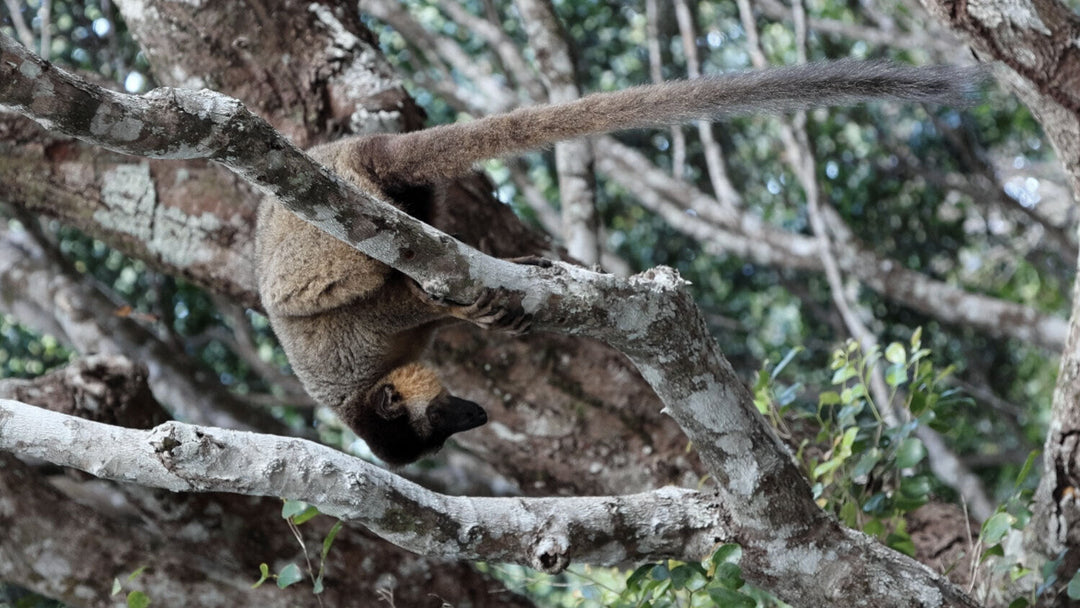Sparrowhawks in a mid-Wales garden
This is our second blog entry from Clare Boyes, a trail camera enthusiast and wildlife recorder in mid-Wales. Here, Clare shares her trail camera encounters with sparrowhawks.
Checking camera traps is always a high point of my week - the buzz of anticipation - not knowing what might turn up next. I had a surprise in early April when one camera, focussed along a mammal trail in our small woodland, filmed a male Sparrowhawk on the ground. I assumed it had caught prey and was plucking it on the ground, although no evidence remained. The following day, the camera recorded Sparrowhawks calling, and a female collecting twigs. Over the next few days, there were a handful of captures of the pair collecting twigs, although the male’s contribution was not up to much! By watching the angle as they flew off I was able to work out the nest location. Sparrowhawk nests are elusive. I had never seen one before. The birds are said to prefer conifers, but always choose trees with a clearing around them for easy access to the nest. This huge nest was beneath the canopy of a hawthorn tree growing on top of a bank, with a long drop to the stream below. The nest was very well hidden and only glimpses of the structure could be seen from one or two places. I doubt I would have found it were it not for the camera traps.The birds themselves were quite secretive: I did not see any display flights, nor see the birds hunting in the garden. I wondered if the male would hunt at the garden bird feeder but was told that they do not seem to hunt in their own ‘back yard’, and this was borne out throughout the summer.
In May, I noticed a fallen tree limb was providing a ‘plucking perch’ for the birds. I ordered another camera (from Naturespy of course!), and put it in place. By this time the female, who does all the incubation, was on eggs. The male flew onto the perch with prey, and called to the female, who would fly down from the nest to eat the next offering. Sometimes mating took place, always preceded by a gift of food.
The male appeared to be nervous as he called her– as well he might be- the female is significantly larger than the male and often flew in so fast she dislodged him from the perch. It was sometimes impossible to see the prey change talons and, just occasionally, the birds messed up the food pass!
The clips showed that the female would pluck and eat the
prey, wipe her beak clean and return to the nest, within 5 minutes. Now and
then the cameras caught the female dropping down to the stream to bathe and
drink.
Sparrowhawks are late nesters: egg hatching is timed to coincide with the maximum number of prey items – in this case, tits and other small birds. The female lays eggs at two day intervals although incubation starts after two or three eggs have been laid. The pair were still mating during late May – and it is possible that she laid 5 or 6 eggs. Then June arrived, with the wettest month recorded in our garden of any month in the last 27 years. The camera had been filming the male bringing in between 3 and 7 prey items daily; however torrential rain during the second week in June resulted in no sightings. I feared the worst – how could the male hunt in the wet and windy weather, and how on earth could the female keep the eggs warm and dry in such a rainstorm? I felt sure the nest had been abandoned.
Then, almost two weeks after the last camera sighting the birds reappeared– the nest had somehow survived the tempest. I estimated the chicks would have hatched around midsummer’s day; and then there is another four weeks before the chicks fledge. However, once the chicks had hatched, the male no longer brought food to the perch. I had been told that young birds would be very noisy in the nest, but this proved not to be the case. There were a few glimpses of the chicks in the nest from the footpath - there could have been five chicks of various sizes, but it was difficult to be sure. They were tolerant when I visited the cameras to change cards, but less tolerant of this buzzard who had the temerity to sit beneath the nest.
I think the chicks fledged around the middle of July – the cameras caught a few glimpses of them soon after they left the nest, but they were very elusive – note the pale eyes. However, at this stage they started making plenty of noise!
It was a real treat to be able to follow these birds throughout the summer. Sparrowhawks don’t reuse their old nests, so I feel really lucky to have witnessed aspects of their behaviour which I could never have seen without my cameras. I wonder what will turn up next?

